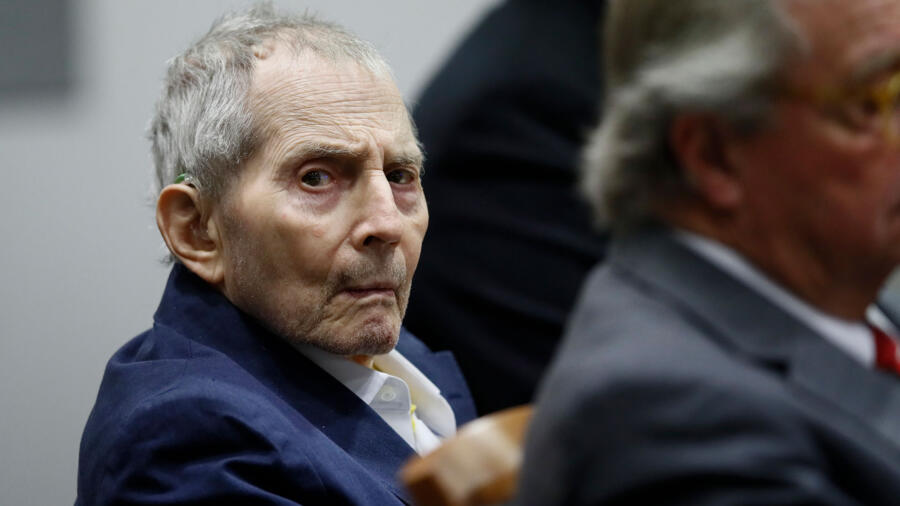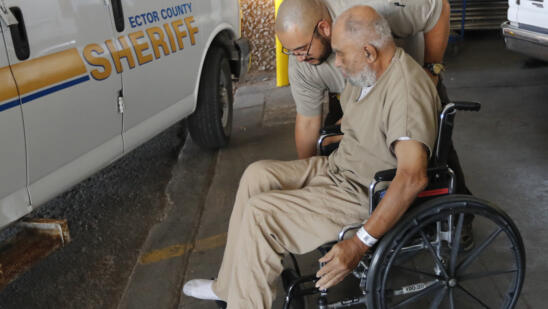In the days after writer Susan Berman was discovered dead in her Beverly Hills home, suspicion quickly fell on members of the Las Vegas crime syndicate once run by her father as well as her agent, with whom Berman allegedly had a tumultuous relationship.
But the real story of Berman’s murder turned out to be even more outlandish. Robert Alan Durst—the eccentric millionaire and heir to a Manhattan real estate dynasty that runs the World Trade Center—murdered Berman as part of an alleged killing spree that spanned four decades and left three people dead.
According to law enforcement authorities, the spree began in 1982, when Durst allegedly murdered his 29-year-old wife, Kathleen McCormack. McCormack disappeared from the couple’s New York home after weeks of marital discord. Though her body was never recovered, she was declared dead in 2017.
Eighteen years after McCormack’s disappearance, Durst shot Berman execution-style in what prosecutors said was an attempt to keep his wife’s murder a secret. Berman, Durst’s longtime friend, knew he had killed McCormack and threatened to expose him, they said.
Police discovered Berman’s body in a pool of blood after receiving a handwritten letter penned by Durst, which included her address and the word “cadaver” written in capital letters.
Finally, in 2001, after months of posing as a mute, elderly woman living in a Galveston, Texas, boarding house, Durst was accused of shooting 71-year-old neighbor Morris Black, then using a saw and carving knife to cut his body into pieces. Durst allegedly disposed of the corpse in Galveston Bay. But a Texas jury acquitted him.
A 2015 documentary series, The Jinx: The Life and Deaths of Robert Durst, finally lead to Durst’s undoing: A hot microphone caught Durst apparently confessing to Berman’s murder. A Los Angeles jury convicted Durst of Berman’s murder on September 17, 2021. He was sentenced to life in prison, but died only months later due to natural causes at age 78.
Even before Durst’s trial began in Los Angeles County Superior Court, Judge Mark E. Windham declared: “I’ve never seen a more interesting case in my career.”
A&E True Crime looks back at some of the most memorable moments from a trial four decades in the making.
‘A Charming Psychopath’
Durst’s notoriety presented unique challenges for prosecutors and defense attorneys who hoped to seat a non-biased jury.
To whittle a pool of potential jurors from 1,000 to 23, including 11 alternates, attorneys asked a series of questions meant to determine views on everything from wealth to gun ownership.
But what they really needed to know was: How did prospective jurors feel about Durst?
One contender declared Durst a “charming psychopath.” One called him “dangerous.” Another said Durst was guilty not only of killing Berman, but of slaying McCormack and Black too.
After weeks of exhaustive questioning, eight women and four men were sworn into the jury.
The Trial’s 14-Month Hiatus
Starting in March 2020, the COVID-19 pandemic crippled courts across the country, halting jury trials and pausing in-person proceedings for months. The Los Angeles County Superior Court, where Durst was tried, was no exception.
In fact, Durst’s trial had begun only days before the court shuttered. His trial wouldn’t begin again for another 14 months.
When the trial resumed on May 17, 2021, the judge allowed attorneys to address the jury a second time. “I have never given an opening statement in the same case twice,” lead prosecutor John Lewin said.
Delayed by a Catheter
In what prosecutors claimed was yet another ploy in Durst’s arsenal of evasions, his attorneys asked the judge to delay his trial because he had bladder cancer. As a result, they said, he’d suffered a urinary tract infection and had been fitted with a catheter. As proof, Durst held up his catheter bag in the courtroom.
Seated in a wheelchair, the gaunt, 78-year-old Durst did not persuade prosecutors that he was too ill to proceed. Arguing against the proposed delay, Lewin offered to change Durst’s catheter bag for him.
Windham denied the defense attorney’s request. But when the trial resumed, Windham ordered a blanket be placed over Durst’s lap. “One doesn’t ordinarily meet with the public with a catheter bag in full view,” the judge said.
Durst’s Testimony Worked Against Him
Nearly two decades earlier, in 2003, Durst had testified in his own defense in a Texas courtroom, claiming he had killed his elderly neighbor, Black, because he was in fear of his life.
Durst said he shot Black accidentally in a frenzied scuffle for his handgun, after he found Black inside his apartment holding the weapon. After shooting Black in the head, Durst testified that he chopped up Black’s body, wrapped the pieces in plastic and dumped them in Galveston Bay.
That jury acquitted him of Black’s murder, but convicted him of destroying evidence.
At his trial on Berman’s slaying, Durst once again opted to take the witness stand. But his testimony didn’t work in his favor. Instead, Lewin relentlessly questioned Durst, eventually forcing him to admit that he’d lied under oath about Berman’s killing.
After nearly 40 hours of cross examination, a weary judge Windham instructed Lewin to stop: “At some point, there’s a limit,” he said.
Durst’s Confession on Tape
By the end of the trial, 80 witnesses had testified and nearly 300 exhibits were entered into evidence. But the most damning evidence came from Durst himself.
In final interview for the documentary series The Jinx, Andrew Jarecki, the director, presented Durst with the envelope from the “cadaver” letter that was sent to police after Berman’s death. Jarecki also showed Durst an envelope that Durst had used to send Berman a letter years before her death.
On both envelopes, Jarecki pointed out, Beverly Hills was misspelled “Beverley Hills.” Handwriting experts believed the same person wrote both letters, Jarecki told Durst.
Shaken, Durst went to the restroom with his microphone still attached. There, hidden from the cameras, he confessed to all the murders. “What the hell did I do? Killed them all, of course,” he said. ” Durst added: “It was her or me. I had no choice.”
Prosecutors later used Durst’s words again him. Habib Balian, who prosecuted Durst with Lewin, said in his closing statement that Durst’s recorded confession “says it all.”
Related Features:
Experts on the Twisted Reasons Why Some Husbands Kill Their Wives


